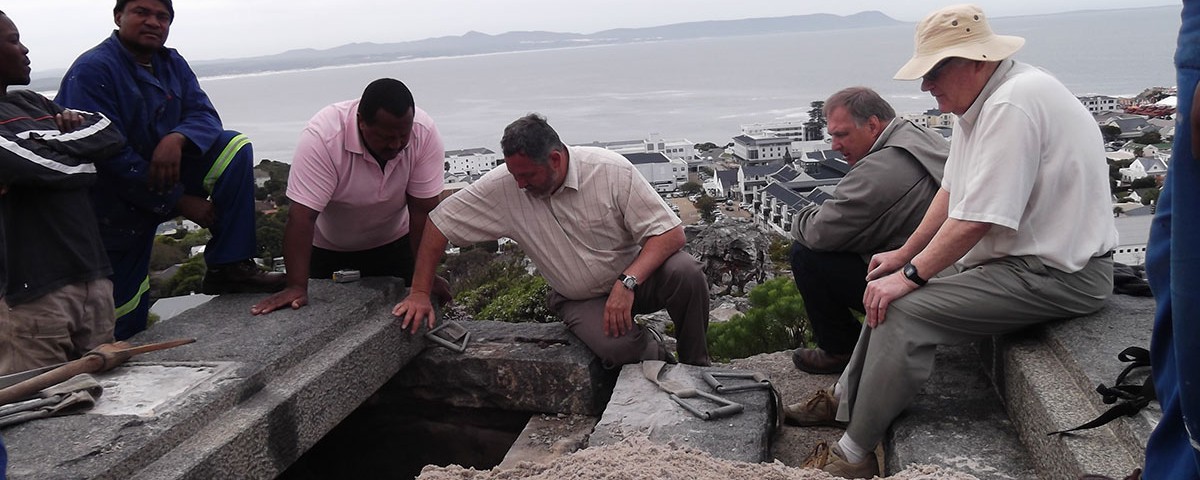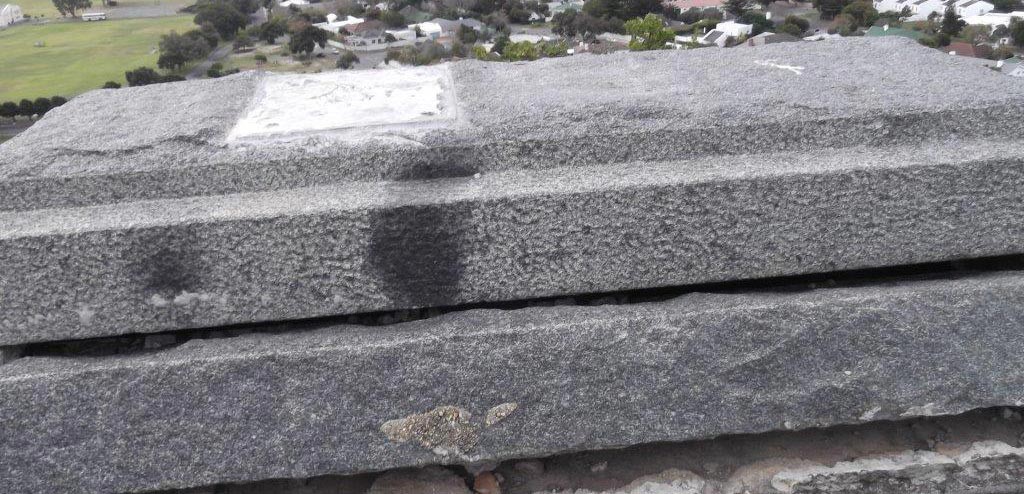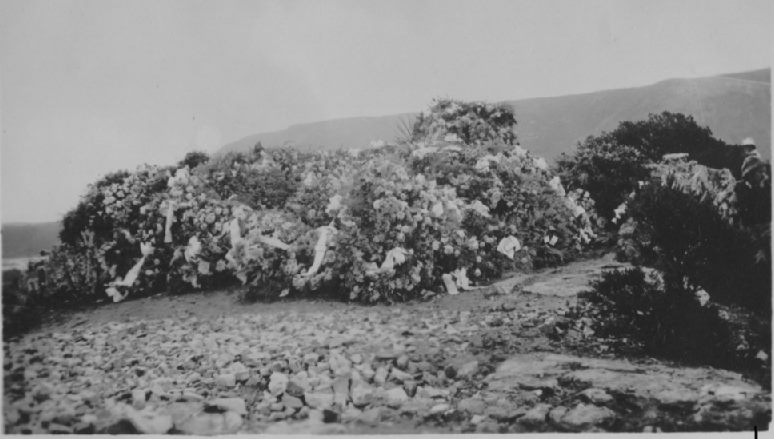The graves of Sir William and Lady Hoy on the summit of Hoy’s Koppie are (regrettably) damaged from time to time. Three months ago vandals with crowbars made a serious attempt to remove the large granite blocks that border the graves. They did not succeed in opening the graves, but did enough damage to Sir William’s grave for it to require expert restoration. Lady Hoy’s grave was not damaged on this occasion, though the inscriptions on both graves were stolen on a previous occasion.
Don Kearney, the Municipality’s Area Manager for Hermanus, called in the History Society to advise on restoration, and asked us to attend on Friday 2 October. The task required the removal of the granite block on the right hand side of the grave, which then exposed the grave itself. With the agreement of the Municipal officials we looked inside.
For the first time it was possible to see in detail the elaborate construction. We know from written accounts that explosives were used to blast a hole in the rocks at the summit of the Koppie. We did not know that the hole was shaped into a rough rectangle and that a complete concrete box was built inside this to provide a ‘burial chamber’. We guessed that the coffin was placed on the floor of the box, the dimensions of which are approximately 2, 4 meters by 1, 04 metres.
This fortuitous glimpse made it very clear that immense trouble was expended on the grave. We know from other sources that Hoy’s personal ghillie, Danie Woensdreght, mobilised all the fisherman of the village to undertake the self-imposed tasks of cutting the first formal path to the summit of the koppie, carrying up all the materials required and, presumably, constructing the concrete box and bringing up the beach sand with which the coffin is covered.
By calculation based on the size of the concrete box, the fishermen would have carried 18 tonnes of materials to the top of the Koppie, comprising 10 tonnes of granite, 7 tonnes of beach sand and 1 tonne of materials for the concrete to make the box. They also carried up the coffin and its contents on the day of the funeral. Their contribution says a great deal about Sir William’s relationship with the ordinary folk of his adopted village.
We have a very rare image of the grave covered by flowers on the day of Sir William Hoy’s burial in 1930. Now we know what was under the flowers.
Robin Lee
(Published in Hermanus Times page 14 on 8.10.2015)



